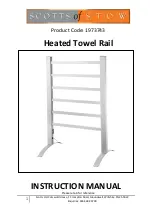
25
Appendix B
Glossary
10Base2—Also called thin Ethernet, thinnet or CheaperNet, a 10 MHz baseband
specification. Cable impedance is 50
Ω
and maximum coaxial segment length is
185 meters (607 ft.).
10Base5—Also called thick Ethernet, a 10 MHz baseband specification. Cable
impedance is 50
Ω
and maximum coaxial segment is 500 meters (1,640 ft.). The cable is
commonly referred to as yellow cable. Thick Ethernet cable is typically used as a trunk
or backbone path of the network.
10Base-T—IEEE 802.3 UTP Ethernet. Low-cost Level 3 or better UTP wiring affords
100 meters (328 ft.) of point-to-point link segments. UTP uses RJ-45 connectors and
sometimes 50-pin Telco connectors to a patch panel and runs at 10 MHz.
ATTACHMENT UNIT INTERFACE (AUI)—Connection between a MAU
(transceiver) and a DTE (typically a workstation). Includes a 15-pin D-sub connector
and sometimes a 15-conductor twisted pair cable. Maximum length is 50 meters (164
ft.).
BASEBAND COAXIAL SYSTEM—A system whereby information is directly encoded
and impressed on the coaxial transmission medium. At any point on the medium, only
one information signal at a time can be present without disruption.
BAYONET NUT COUPLE (BNC) CONNECTOR—A 10Base2 thin coax connector
with push-on BNC locking lug that quickly locks into place with a half twist.
BIT RATE (BR)—The rate of data throughput on the medium in bits per second.
Ethernet specifies 10 million bits per second.
BIT TIME—The duration of one bit symbol (1/BR). Ethernet specifies a bit time of 100
ns.
CARRIER SENSE—In a LAN, an ongoing activity of a data station to detect whether
another station is transmitting.
CARRIER SENSE MULTIPLE ACCESS with COLLISION DETECT (CSMA/
CD)—This is the access method employed by IEEE 802.3 LAN transceivers, by which
multiple stations compete for use of the transmission medium (coax cable) for data
packet transmission. It provides for a level of error detection should that transmission
be corrupted or impeded by contention for the transmission medium.
COAX SEGMENT—A segment of Ethernet cable that contains MAUs.
COAXIAL CABLE—A two-conductor (center conductor, shield system), concentric,
constant impedance transmission line used as the trunk medium in the baseband
system.












































